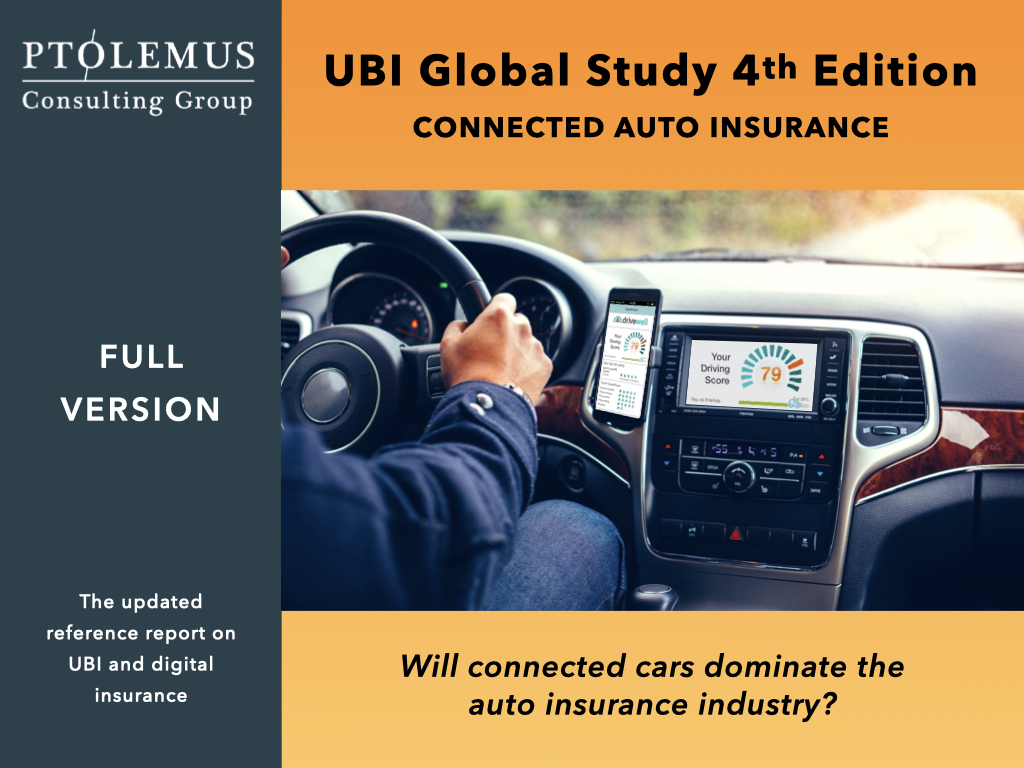OBD-II Dongle to become UBI’s default hardware globally?

Since its early day as a data logger, the OBD Dongle form factor has matured into the device of choice for a wide range of solutions, models and service provider types. We examine the key advantages of the Dongle, the most promising business models based on it and how it is evolving to become the default hardware of UBI propositions.
The OBD dongle is becoming the most popular UBI product category, and will equip 27 million vehicles in 2020, representing a $475 million annual market for manufacturers.
Services using the dongle + smartphone combination are being launched every month in countries as varied as the US, China and Hungary, with innovative models targeting the driver directly.
 Today, most UBI programmes in the US are based on OBD dongles, and globally the device represents about 20% of the hardware used in UBI. We expect that market share to grow steadily alongside the increasing use of smartphones.
Today, most UBI programmes in the US are based on OBD dongles, and globally the device represents about 20% of the hardware used in UBI. We expect that market share to grow steadily alongside the increasing use of smartphones.
Is the OBD Dongle going to replace the traditional blackbox, and can we all expect to have one in our car soon?
The critical advantages of OBD dongles:
The OBD plug-in tools originated as data loggers for diagnostics services in workshops. Since the advent of Usage Based Insurance – and particularly since Progressive’s Snapshot programme – its use has exploded and the EOBD / OBD-II dongle has morphed into a wide range of products adapted to various regulations, market needs and segments.
Installed by the driver, the dongle has become an essential part of the UBI sales and marketing process, not only allowing the driver to feel he is in control of the service, but also serving as a physical reminder of the driver’s connection to the vehicle.
Black box installations by technicians have the opposite role of establishing a surveillance or security type of relationship. This is possibly why the acceptance of the dongle has been so widespread in the US in comparison to the UK.
The OBD dongle is a visible accessory that can be branded and used to make the insurance service tangible, easily differentiating it from other products. From a proposition perspective, an OBD dongle can also be connected to the driver’s smartphone, saving the insurer on communication costs.
There are, however, operational issues to consider, primarily at the proposition level. The app needs to fulfil a need (ideally many needs) and foster recurring usage. It must run equally well on all smartphones, and ideally in the background to save battery life. The service also requires silent, secure, two-way Bluetooth pairing and an initial pairing mechanism that is easy to understand and follow. Lastly, in the hybrid (Bluetooth-enabled) model, the dongle will be expected to store a significant number of trips until the driver collects the data on his smartphone.
Despite all this, Bluetooth-dongle hybrid solutions are becoming the fastest growing model to provide UBI and vehicle services. Almost all hybrid solutions provide uniform data, which is not always the case in smartphone-only solutions. The data from a dongle is significantly “cleaner”, and much of the processing can be done on the device, saving bandwidth and server processing. In addition, the dongle can record the data automatically, which is more challenging in smartphones.
From a financial perspective, the OBD dongle hardware costs are similar to those of black boxes, but do not require installation and are immediately connected to the car’s CAN-bus system and power. Of course, in the case of the Bluetooth connected devices, the BOM costs can be as low as one-third of an installed black box. This is largely due to the GPS/3G modem, which adds about €25 in low volumes, whereas Bluetooth chips are inexpensive because of the technology’s current proliferation.
In addition, that connection to the vehicle opens up the potential for applications generated from vehicle’s data, from fuel consumption and CO2 emissions monitoring, to remote diagnostics or even tyre management. However, that advantage is also the device’s main drawback: compatibility. The US insurance sector claims that 95% of the cars are compatible, but in Europe, it is still partly unknown.
The European OBD standard is slightly different to that of the US, where almost all vehicles use the same CAN standard of OBD or possibly the older J1850 standard (pre-2003). In the EU, OBD can be K-Line (SIO 9141), KWP 2000 or CAN, and there are a number of different flavours within those standards too.
Yet the race is on for the manufacturers to make their OBD devices compatible with more and more vehicles, including the ability to access some data from all car models. Also – and perhaps more importantly – the race is on to create devices that fit in all vehicles in Europe. New versions of OBD dongles are virtually flat above the OBD port, so allowing the port hatch cover to be closed to enable discrete installation.
Today, insurance and assistance companies have started launching programmes based on OBD dongles, notably Groupama, Allianz and Direct Line. Other companies are also entering the fray: importers, leasing companies, auto clubs and road assistance companies.
The dongle also has a very potent market for commercial applications in truck, agricultural and construction vehicle fleets. The OBD data and self-install features make it the ideal device for a wide range of professional applications.
As the dongle technology matures, partly due to the increasingly stringent insurance requirements, new business models could emerge outside the insurance realm, the most visible of which is bring your own device (BYOD). The suggestion is that the device is first financed and installed by the user for a range of initial services. Insurance companies can then approach an already equipped driver base and propose PAYD or PHYD options.
This has been particularly effective in countries like China, where UBI is not available yet due to regulations. TSP (Telematic Service Provider) Chainway runs two programmes with insurers Pingan and CPIC, and Chainway claims a total of 40,000 devices on the road. They provide a wide variety of services including navigation, driver log, call centre, concierge and/or maintenance. By the time the regulatory market opens up for UBI in China, hundreds of thousands of drivers could be equipped.
Where will the innovation come from?
The ability to create new attractive propositions is the key innovation here. The BYOD models illustrate the richness of the potential that an app + dongle can offer. The combination enables not only very flexible offering but also differentiation and low entry cost.
We also see a lot of work being done on the device size. Service providers are looking for well designed, marketable dongles with more variety in the features but also compatibility. This is particularly problematic in Europe, where a few millimetres can make a sizeable difference in the number of compatible vehicles. Providers such as Meta System have dongles with a footprint over the port of only 8mm.
Manufacturing methods are also on the battlefield. The market requires customisation and mass production at costs under $100, including a growing number of features such as reliable crash notification – meaning a battery needs to be embedded. To take an example, Danlaw (one of the market leader claiming more than one million devices sold) can customise everything in the firmware from events and scoring algorithms to compression, protocols, and timing.
Another critical differentiator is the ability of the device to read some fault codes on the widest range of vehicles possible, which was a bid-winning factor for Orion in 2012; or to be able to read very specific remote diagnostic fault codes from one brand of vehicles, which was the winning differentiator for Mobile Devices in a recent assistance/automobile club project.
For insurance players, data frequency has become the last key differentiator in the insurance sector. Hardware providers such as Orion are collecting accelerometer- and gyroscope data at a 10Hz sampling rate every second and sending it back to the server in real time.
To conclude, we believe OBD dongle manufacturers will need to focus their efforts on the following points in order to win contracts:
Insert their devices in the smartphone ecosystem by developing hybrid products that can not only connect to phones via Bluetooth but represent an end-to-end solution ,
Provide an ever-increasing range of device form factors and feature sets, as well as the mobile applications they can pair with, from the low-cost vehicle identification device to the high-end PHYD-ready device,
Demonstrate a thorough understanding of the insurance industry requirements,
Prove the device quality by offering vehicle test environment for firmware validation, visits to the factory and assistance in tailoring the solution,
Demonstrate the ability to effectively and reliably communicate the requested data type at the right frequency, especially crash identification and related data.
Ultimately, in the words of Mike Carroll at Danlaw, this is a device plugged into the “Central Nervous System” of the car, so it needs to send actuarial-ready data as safely as an implant embedded in your spinal cord.

